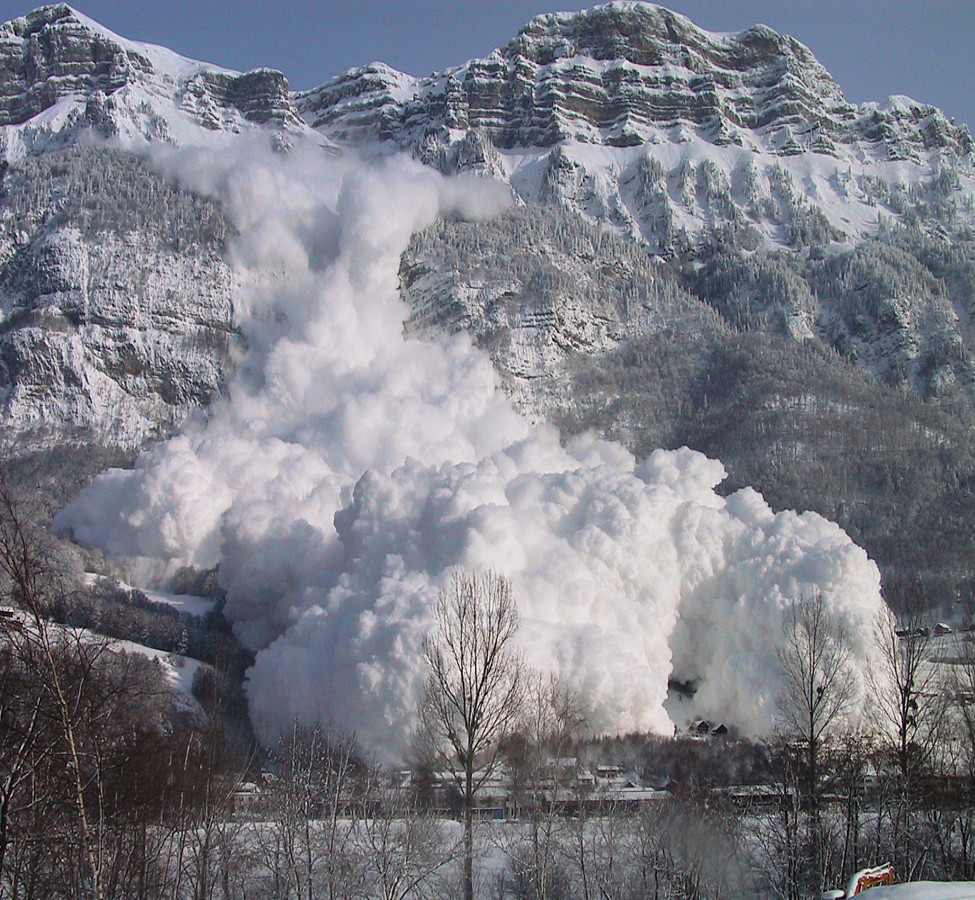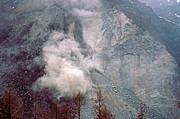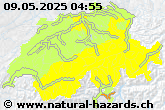Rock avalanche
The term «rock avalanche» or Bergsturz describes a large rock volume of one to several million cubic metres, which detaches from a rock complex. High velocities of the mass and a strong interaction of its components are characteristic features.
› How is a rock avalanche triggered?
› How do I protect myself agianst rock avalanche?
Rock avalanches in Switzerland
Natural thawing and freezing processes promote the physical weathering of rock in the Alps. Because the Alps are a geologically young mountain range with prominently high peaks and steep valleys, falling rocks represent an almost daily event there. Although serious rock avalanches, which alter the landscape permanently and threaten the survival and livelihoods of valley populations are relatively rare, as attested by historical documents, they are very much a component of natural hazards in the Alps.
The traces of major rock avalanches in the Swiss Alpine valleys go back to the end of the last ice age: around 10,000 years ago approximately 11-13 km3 of rock mass fell down into the Rhine valley near Flims following the retreat of the Rhine glacier. The Flims rock avalanche is one of the biggest known rock avalanches in Europe.
In historical times, a major rock avalanche occurred in Goldau which buried, among other things, the old village of Goldau. The pressure wave generated by the rock masses also triggered a tidal wave (tsunami) in nearby Lake Lauerz. The tsunami swell also affected the village of Lauerz on the opposite shore of the lake.
A rock avalanche that occurred in more recent times was that in Randa (VS) in 1991: around 30 million m3 of rock fell down to the valley in two rockfalls in April and May of that year and blocked the river Vispa and transport axes.
It is usually possible to detect that a rockfall or rock avalanche will occur days or weeks in advance due to increasing stone and rock movement. If the population is observant and informs the authorities, suitable measures can be taken in good time (e.g. monitoring, evacuation).





